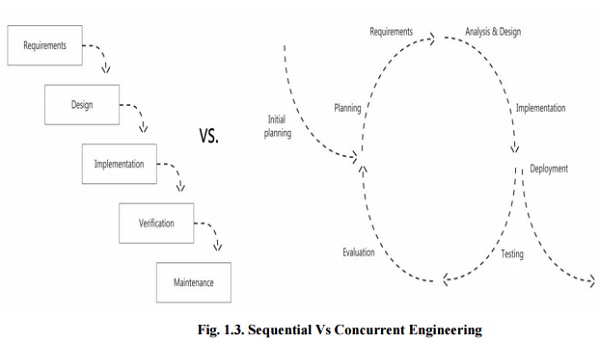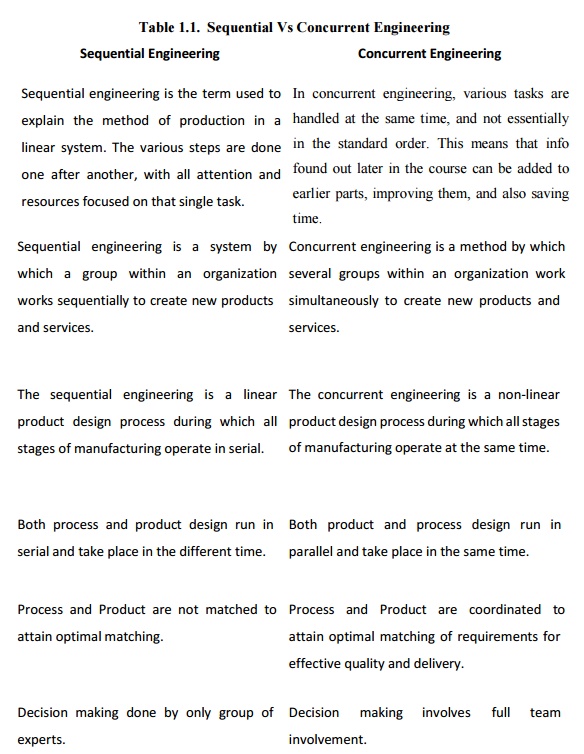Chapter: Mechanical : Computer Aided Design : Fundamentals of Computer Graphics
Sequential and Concurrent Engineering
Sequential and Concurrent Engineering

Table 1.1. Sequential Vs Concurrent Engineering

Sequential Engineering
Sequential engineering is the term used to explain the method of production in a linear system. The various steps are done one after another, with all attention and resources focused on that single task.
Sequential engineering is a system by which a group within an organization works sequentially to create new products and services.
The concurrent engineering is a non-linear product design process during which all stages of manufacturing operate at the same time.
Both process and product design run in serial and take place in the different time.
Process and Product are not matched to attain optimal matching.
Decision making done by only group of experts.
Concurrent Engineering
In concurrent engineering, various tasks are handled at the same time, and not essentially in the standard order. This means that info found out later in the course can be added to earlier parts, improving them, and also saving time.
Concurrent engineering is a method by which several groups within an organization work simultaneously to create new products and services.
The sequential engineering is a linear product design process during which all stages of manufacturing operate in serial.
Both product and process design run in parallel and take place in the same time.
Process and Product are coordinated to attain optimal matching of requirements for effective quality and delivery.
Decision making involves full team involvement.
Related Topics